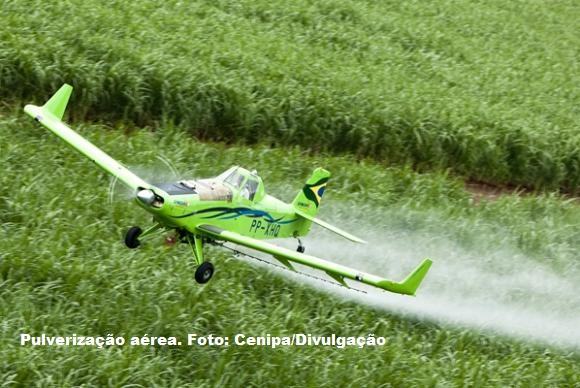Araucária. Foto: Divulgação
A araucária, árvore símbolo do Paraná, está entre as espécies da flora brasileira ameaçadas de extinção e com alto risco de desaparecimento na natureza em um futuro próximo. Faz parte da lista de espécies ameaçadas de extinção da IUCN (The World Conservation Union – A União Internacional para Conservação da Natureza) e da Lista Oficial de Espécies da Flora Brasileira Ameaçada de Extinção do IBAMA – Instituto Brasileiro de Meio Ambiente e dos Recursos Naturais Renováveis. De vulnerável, em 1998 e 2000, a Araucaria angustifolia passou para a categoria ?criticamente em perigo? em 2006.
Pesquisas indicam que a Floresta com Araucária já perdeu aproximadamente 97% de sua área original, o que compromete totalmente a variabilidade genética da araucária. Esse quadro se deve, dentre outros fatores, à conversão das áreas de florestas nativas (Floresta com Araucária) para a agricultura, ao crescimento das cidades e ao uso da madeira. Em 2001, mapa do Ministério do Meio Ambiente já mostrava que áreas de floresta com araucária em estágio avançado de conservação não passavam de 0,8% (66 mil hectares) de remanescentes. O Paraná já chegou a ter 8 milhões de hectares cobertos por Floresta com Araucária. Hoje a situação é muito mais grave.
Restauração
Preocupada com a condição da Araucaria angustifolia, a professora de gestão ambiental da Universidade Positivo, Leila Maranho, propõe a criação e implantação de projetos de recuperação das áreas degradadas antes ocupadas pela Floresta com Araucária permitam a restauração de processos biológicos e genéticos. Ela sugere também que a restauração de floresta com araucária contribuirá com o resgate da cultura local, tais como lendas, contos, estórias, culinária, arte, entre outros. ?Um aspecto merecedor de destaque é a forte depauperação das características culturais associadas ao uso de espécies nativas desse bioma, principalmente da araucária?, observa.
Para o diretor executivo da Sociedade de Pesquisa em Vida Selvagem e Educação Ambiental (SPVS) e membro da Rede de Especialistas em Conservação da Natureza, Clóvis Borges, a Floresta com Araucária continua sendo visada para exploração pela existência de madeira com valor econômico, não só a araucária mais outras muitas espécies. ?E embora ilegal e sem sustentação técnica, há esforços políticos pressionando o poder público a facilitar a degradação dessas áreas a partir, inclusive, de licenciamentos ocorridos nos últimos anos e que são bastante contestáveis em termos de legalidade?, denuncia.
União de esforços
A professora Leila coloca que empresas, organizações, instituições e poder público devem unir esforços para aumentar o número de áreas protegidas de Floresta com Araucária, investir em pesquisa, fiscalizar e aplicar a legislação em áreas nativas desmatadas, fatores imprescindíveis para evitar que a espécie desapareça de vez. Borges complementa que, para proteger os remanescentes que já existem, mesmo que estejam muito fragmentados, devem ser criadas novas Unidades de Conservação públicas e privadas. Além disso, devem ser estabelecidas políticas públicas que permitam a valorização de áreas nativas bem conservadas para o proprietário privado, a partir de diferentes mecanismos de PSA – Pagamento por Serviços Ambientais.
Resgate e conservação
Para contornar a situação da araucária existem inúmeros projetos que visam o reflorestamento e uso sustentável, programas de resgate e conservação da araucária, projeto de uso e conservação da araucária na agricultura familiar e criação e implantação de Unidades de Conservação em áreas de Floresta com Araucária, lista a professora Leila.
Borges avalia que há muito pouca coisa ocorrendo nos dias de hoje de fato voltada à conservação da natureza, o que implica não só na busca da conservação da araucária como de todo o ecossistema a que pertence a Floresta com Araucária. Um exemplo de ação concreta de proteção de áreas naturais remanescentes desse ecossistema é o programa Desmatamento Evitado, desenvolvido pela SPVS. Em 12 anos de operação, os resultados apontam para um sucesso de mais de 36% de Reservas Particulares do Patrimônio Natural, criadas e manejadas, em relação ao número de proprietários apoiados ao longo do período.
A Reserva Particular do Patrimônio Natural (RPPN) Mata do Uru é um exemplo. Mantida pelo Grupo Positivo, por meio do Instituto Positivo em parceria com a SPVS e família Campanholo, fica região da Lapa (PR), a área de cerca de 128 hectares, ao lado de quase 300 hectares do Parque Estadual do Monge, abriga uma área preservada de Floresta com Araucária. Lá é realizado o Programa de Educação Ambiental, que convida os visitantes a conhecer a fundo a Floresta com Araucária e todas as suas peculiaridades.
Controvérsias
No entanto, de acordo com Borges, existe um conjunto amplo de atividades que não estão direcionadas à conservação da biodiversidade envolvendo a espécie Araucaria angustifolia e que não devem ser interpretados equivocadamente. ?Estímulos ao plantio de araucária para finalidades econômicas é um trabalho paralelo, que pode ser admitido, mas que é secundário em relação a ações diretas de conservação de áreas naturais?, acentua.
Também ocorrem muitas iniciativas relacionadas ao “manejo sustentável” de araucária, pleiteando a exploração das árvores maiores nos últimos remanescentes como a “única forma de conservação” existente. ?Uma afirmação mentirosa e demagógica, mas que politicamente é aceita em setores de órgãos ambientais do governo e na própria academia em situações isoladas?, reclama Borges.
Por fim, a intensificação de ações e projetos de conservação e preservação da espécie é condição obrigatória para que a araucária sobreviva. Caso contrário, num prazo não muito longo, a espécie será uma imagem bordada na bandeira do Paraná e vista e conhecida apenas em fotografias e livros didáticos.
Sobre o Instituto Positivo
Alinhado à estratégia de sustentabilidade e em consonância com a principal vocação do Grupo Positivo, o Instituto Positivo tem a Educação como foco prioritário. Ele articula e promove iniciativas que contribuam para o aumento da qualidade da educação básica do país, direcionando os seus investimentos para ações sustentáveis e estruturantes. O IP atua por meio de três frentes: Fortalecimento da Gestão Municipal para a Educação, Produção e Disseminação de Conhecimento e Mobilização Social Estruturada.
Sobre a Rede de Especialistas de Conservação da Natureza
A Rede de Especialistas de Conservação da Natureza é uma reunião de profissionais, de referência nacional e internacional, que atuam em áreas relacionadas à proteção da biodiversidade e assuntos correlatos, com o objetivo de estimular a divulgação de posicionamentos em defesa da conservação da natureza brasileira. A Rede foi constituída em 2014, por iniciativa da Fundação Grupo Boticário de Proteção à Natureza.
Sobre o Programa Desmatamento Evitado
Anteriormente chamado de Programa de Adoção de Floresta com Araucária, o Programa Desmatamento Evitado é um exemplo de ação bem sucedida envolvendo a iniciativa privada para a conservação de áreas naturais ameaçadas. Iniciado em 2003, o Programa apresenta como principal objetivo a conservação dos últimos remanescentes em bom estado de conservação da Floresta com Araucária, estabelecendo um mecanismo de ?adoção de áreas?, em que a SPVS identifica e cadastra proprietários, os aproximando de empresas interessadas em apoiá-los, bem como a conservação dos remanescentes em suas propriedades. Em 2007, o Programa ganhou escala por meio de novas parcerias firmadas e, desde então, apresenta um resultado de mais de 4.500 hectares de remanescentes e cerca de 33 propriedades apoiadas ? distribuídas nos três estados do sul do Brasil ? viabilizadas pelo apoio de 17 instituições.
Sobre a SPVS
A Sociedade de Pesquisa em Vida Selvagem e Educação Ambiental (SPVS) é uma instituição brasileira, fundada em 1984, em Curitiba. É reconhecida como uma das organizações não-governamentais conservacionistas mais atuantes no Brasil. Uma das características mais acentuadas das atividades desenvolvidas pela SPVS diz respeito à inovação, como prática para incorporar valor às ações de conservação de natureza, estabelecer uma conceituação adequada sobre o tema e dar escala para uma agenda de iniciativas que hoje começam a ser incorporadas nos negócios e percebidas como essenciais às atividades econômicas e à qualidade de vida das pessoas.












